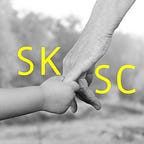Child Exploitation and Human Trafficking
When you think about prostitution you don’t think about kids. But most studies have shown that the average age of entry into prostitution is between 12 and 16 years old.[1]
This is TRAGIC and you can HELP.
Barbara Amaya’s story is not out of the ordinary, she ran away when she was 12 years old. She is a survivor — but only after being trafficked and sold for eight years.
“During my time on the streets of New York I was abused, shot, stabbed, raped, kidnapped, trafficked, beaten, addicted to drugs, jailed, and more all before I was 18 years old.”
Barbara now helps others that are victims of human trafficking and has an important message.
“I choose to be a victor not a victim — not just to survive, but to thrive.”
BRING BACK OUR GIRLS
from the cycles of violence;
— from the manipulative hands of their traffickers;
— from the sexual abuse traumas that haunt them;
— from the exploitation that values their bodies as commodities;
— from the societal disappearances of young girls because they are seen as prostitutes.
Until recently police have attempted to curtail street prostitution by arresting the providers without placing much emphasis on the customers. Illicit sex trade is driven by the demand.
Police throughout the nation are changing their strategies about prostitution….and more importantly — their attitudes. In progressive police agencies there truly is a change.
No longer are the pimps called pimps — they’re TRAFFICKERS who are exploiting human beings. The word Pimp has often been glamorized in modern culture.
No longer are prostitutes being called prostitutes — they’re VICTIMS of the trafficker. Most often the victim is being exploited by a trafficker.
The trafficker will exploit the weaknesses of the victim — often by
· emotional abuse and physical abuse
· isolation and exclusion
Human trafficking of children may involve any of the following:
· Prostitution
· Stripping
· Pornography
· Forced begging
· Magazine crews and other door-to-door sales
· Domestic Work
· Restaurant Work
· Hair and nail salons
· Agricultural work
· Drug sales and cultivation
You can help by looking for some of the warning signs and report any suspicions to the police. Some of the signs may include –
· Fails to attend school regularly or has unexplained absences
· Frequently runs away from home
· Makes references to frequent travel to other cities
· Exhibits bruises or other signs of physical trauma
· Shows signs of drug use
· Appears to have coached or rehearsed responses to questions
· Has a “boyfriend” or “girlfriend” who is noticeably older
Human trafficking is the manipulation of vulnerabilities that may or may not result in loss of freedom — at the expense of the victim for the profit of the trafficker.
The majority of human trafficking victims are women and children. The U.S. Department of State estimates that approximately 80 percent of victims trafficked from other countries are women and girls and up to 50 percent are minors.
In October 2000, the Trafficking Victims Protection Act of 2000 (TVPA) made human trafficking a Federal crime.
Know the warning signs — report your suspicions to the police — you can make a difference.
[1] Shively, Michael, Kliorys, Kristina, Wheeler, Kristin and Hunt, Dana. “A National Overview of Prostitution and Sex Trafficking Demand Reduction Efforts.” National Institute of Justice, Office of Justice Programs, U.S. Department of Justice.
